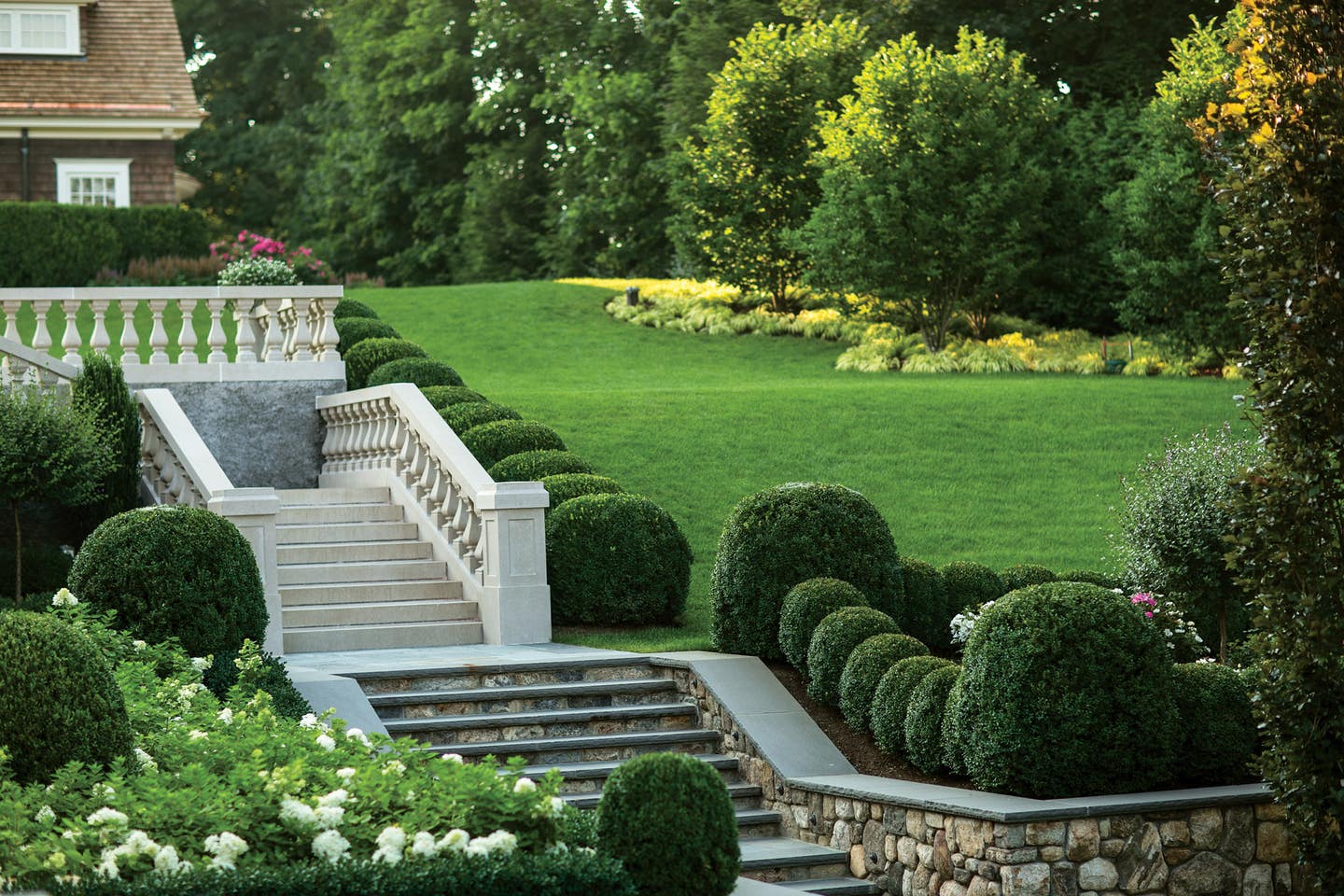
Projects
Janice Parker’s Revival of an Ellen Biddle Shipman Landscape
Janice Parker took the formidable challenge of restoring a 1920s Ellen Biddle Shipman-designed landscape and conquered it.
She was fortunate to connect with owners who were as passionate as she about preserving the timeworn garden architectural features at the formerly named “Altna Craig” estate in Ridgefield, Connecticut. “It takes a mature client to preserve and not knock down old buildings and architectural elements,” she points out.
A Palladio Award winner, Parker is a principal at Greenwich, Connecticut-based Janice Parker Landscape Architects. In addition, she is the author of the stunning Janice Parker Landscape Architects: Designing a Vision (2017). She is awed by Shipman and considers her a muse. “It was an honor to try and preserve her work and led me to study groundbreaking early women landscape designers,” she reflects. With no original plans or photos to work with, she relied on Shipman expert Judith Tankard for advice.
The homeowners used Connecticut-based architect Sean O’Kane not only to restore the existing vintage Shingle-style home (for planned use as a guesthouse) but also to build a new, complementary main home. Parker says O’Kane “paved the way and made it possible for me to do the project.” The architect also helped with the restoration of the many crumbling balustrades about the property and fabricated new ones to match.
The overarching goal was to bring back a cohesive look to the 1.5-acre estate. Sounds easy, but Parker had to deal with a steep gradient, among other factors.
A starting point for Parker’s site design included re-joining the awkward 20th- century subdivision of the land that now had two homes on it. She aimed for a feeling of symmetry and movement and used the clients’ favorite plants to lend a romantic feel to the place—one that harkens back to the Gilded Age-era when it was built. Parker achieved this harmony by linking the disparate parts with her signature grass-jointed strolling paths and box hedge walls. She also inserted new stone steps into the lawn panel that slopes downward toward the west. Finally, to add color and texture in the upper reaches, she mixed trees with shrubs such as Japanese maples, hornbeams, beech, and clipped evergreens.
Another priority of the Ridgefield, Connecticut, the project was to repair existing architectural features. For example, there was the “dolphin fountain,” centered into the curved wall of the main stucco upper terrace that needed to be restored. Parker believes it was the original center of the Shipman design.
To bring the dolphin fountain terrace area back as the center axial point of the property was perhaps the most challenging part of the design process.
Moreover, the team had to get it working again and add a new tiered “top fountain” (with new pump room) to the upper terrace that would be in a sight line from the new main house. Many were involved in the fountain work, including the general contractor and an expert plumber. “To get it up and running, when it probably hadn’t run in 80 years, as well as to add a new one to the top area above the existing one was a feat of plumbing engineering,” Parker praises. The dolphin fountain had to be re-chambered, re-plumbed, and re-waterproofed. The final step was to find an expert craftsman to restore the original pebble stucco finish on the wall.
Below the fountain terraces, to the left, is the square Pavilion Garden. The classically designed original pool house was in surprisingly good condition and only needed a new skim coat of stucco and concrete. In place of the former swimming pool is a turf area that begs for a game of badminton or croquet. A final Parker touch is an ornamental stone bench that looks like it has been there forever. “One of the main things that makes a garden is the bench,” says Parker. “Even if you don’t sit on them, they create an intimate domesticity to the scene.”
Moving downward from the Pavilion Garden is a series of three old-fashioned-style rose arches designed by Parker. A handsome, bespoke stag sculpture made of stone, iron, and limestone by New England Garden Ornaments sits at the end of the axial line.
Grass-jointed paths, designed in a clever Union Jack pattern, lead to a large semi-circular original stone bench. Parker enjoyed reinvigorating this romantic destination spot located at the west end of the property, saying, “It reminds me so much of the beautiful garden details that have been protected at Dumbarton Oaks.” She replaced existing ho-hum pavers in front of the classic bench with a “simple” pebble compass rose. Behind is a cozy screen of pruned European hornbeams.
Pink and white roses play a key role in the garden rooms. A favorite flower of the homeowners, they are used as climbers on the arches and also in a series of small beds framed with lavender and boxwood that dot the landscape.
Mature and new trees ring the property. A Parker favorite is the red fastigiate beech. “We have them laid out in corners of the lawn panel. They add a lot of green architecture as well as create an enormous amount of value for the homeowners in the long term,” she notes. Fastigiate trees tend to grow nicely without casting too much shade. Reliable underplantings include ribbon grass, Hakone grass, and “Limelight” hydrangeas “that tumble about the bases,” says Parker.
The restoration of the Ridgefield, Connecticut, estate landscape took over four years to complete at a cost of approximately $500,000. The multifaceted project posed a myriad of challenges. Parker continues to convey gratitude for her clients, Shipman, and all of the professionals who helped make her vision a reality. The goal was always to preserve existing elements where possible. It was also to integrate new landscape features in a manner that did not look forced. All told, it is a historic American garden created by the groundbreaking Shipman and lovingly restored by Parker.








